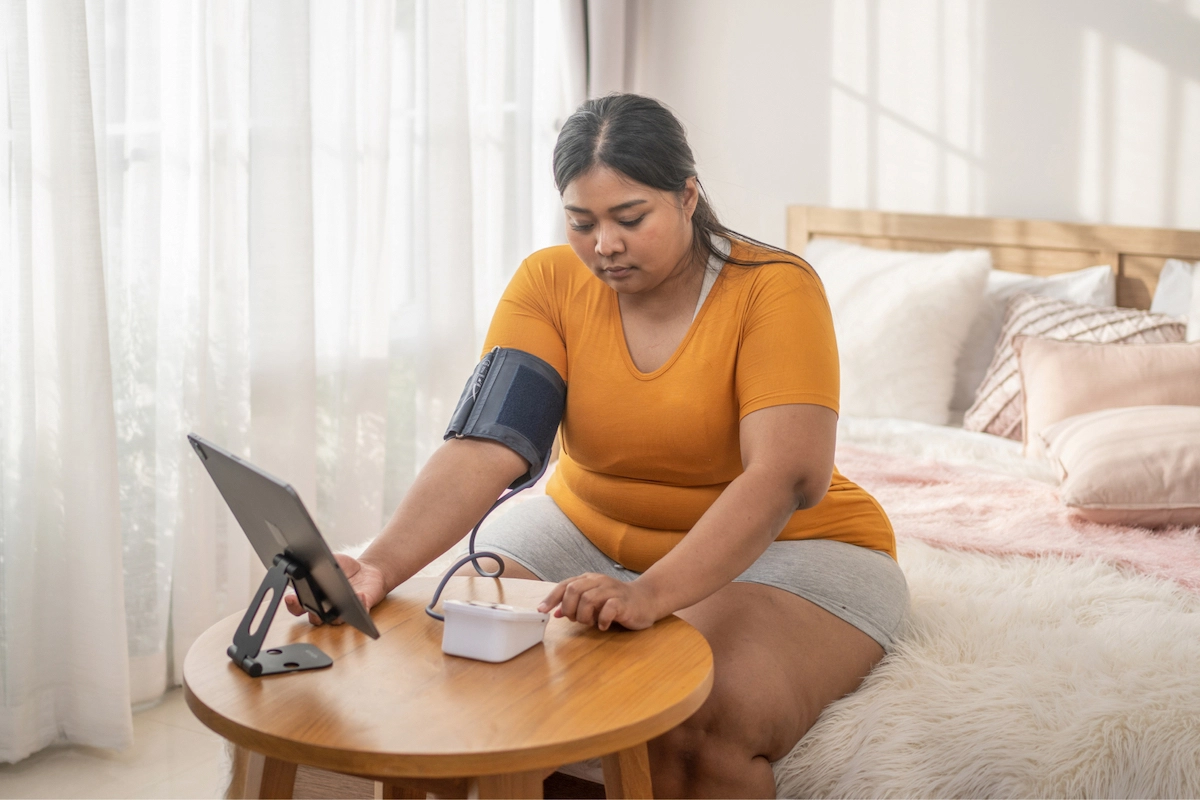High-quality virtual care delivers improved blood pressure in 77 percent of patients

A study conducted by Included Health in collaboration with researchers at Stanford Medicine with results published in the Mayo Clinic Proceedings: Innovations, Quality & Outcomes provides insights into the clinical advantages of delivering high-quality healthcare, virtually.
It’s not enough for virtual care to be convenient, it must also be effective. This study evaluated the efficacy of virtual care in treating hypertension (high blood pressure):
- First, it is important to note that 6 in 10 adults in the U.S. have a chronic disease and 4 in 10 have two or more chronic conditions
- According to the Centers for Disease Control and Prevention and the American Heart Association, hypertension remains a significant population health issue:
- Nearly half of adults in the U.S have hypertension
- Only about 1 in 4 adults with hypertension have their condition under control
- Virtual primary care has shown it can increase utilization and patient compliance
In this study, the goal was to assess the effectiveness of video visits in the management of hypertensive patients at home during the first 12 months of the COVID-19 pandemic. When looking at how patients access and utilize virtual healthcare, there are opportunities to improve outcomes and costs.
For chronic conditions like hypertension, we must consider the impact of the virtual care model in raising the standards of care for all patients.“
Clinical associate professor of cardiology at Stanford Health Care
*Co-author of study
Raising the standard of healthcare for everyone
More than access, virtual care delivers positive health outcomes for those with chronic conditions:
Home video visits were utilized to treat 569 patients who were diagnosed with essential hypertension during the first 12 months of the COVID-19 pandemic. The studied population experienced a number of positive outcomes by treating their chronic hypertension with virtual care:
- Virtual care visits to manage hypertensive patients demonstrated an improvement in blood pressure in 77% of patients
- When we compared initial and final recorded Systolic Blood Pressure (SBP) and Diastolic Blood Pressure (DBP) during the study period, we found statistically significant reductions of 9.7 mm Hg and 6.8 mm Hg in SBP and DBP, respectively
- Patients residing in rural areas and urban/suburban areas had similar reductions in SBP (7.7 mm Hg vs 10.0 mm Hg; P1⁄4.38) and DBP (6.6 mm Hg vs 6.8 mm Hg; P1⁄4.92)
- Similarly, patients across different age ranges (<40 years, 40 to 59 years, >60 years) attained similar reductions in SBP and DBP
Let’s take a look at the numbers
Gender split
Conclusion
Collectively, these results highlight that virtual care, delivered by high-quality physicians and providers, offers an efficient, effective, and patient-centered approach to address important gaps in hypertension management, including access to care and patient engagement.